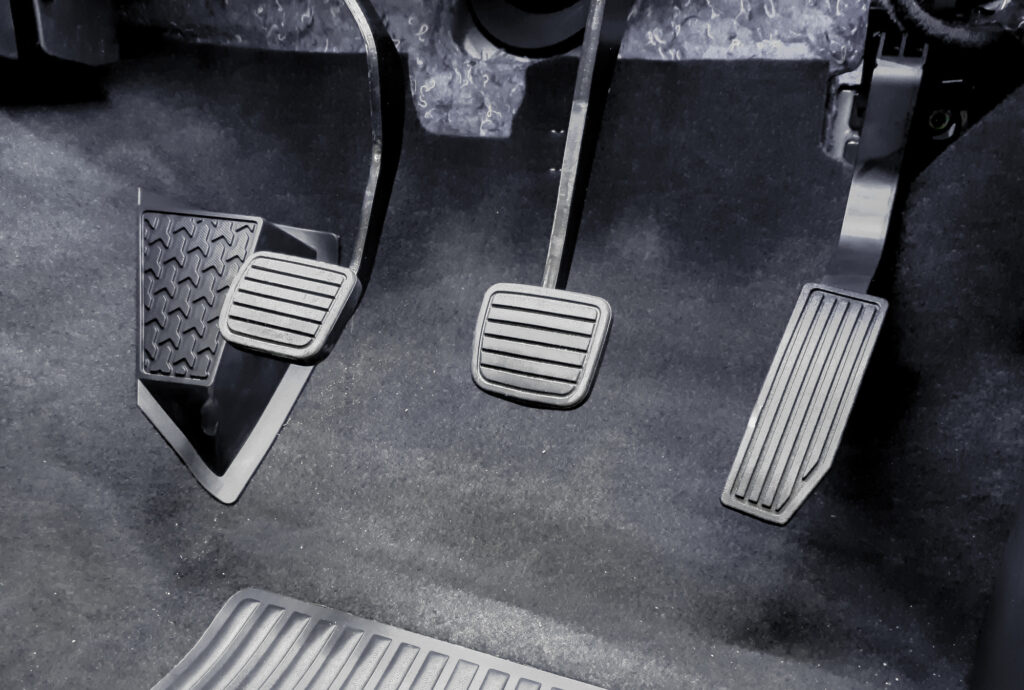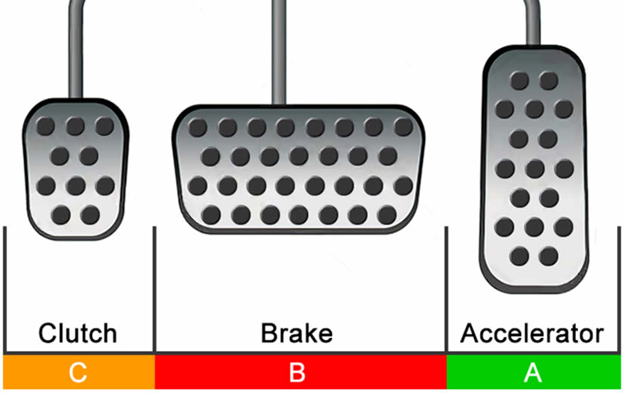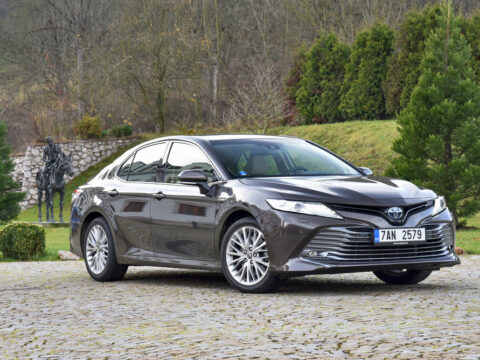For new drivers, understanding the function of the pedals in the driver’s seat is essential. Regardless of the age at which you got your driver’s license, if you are wondering which pedal is which or whether the gas pedal is on the right or left, we are here to help.
With a focus on clarity and precision, we’ll guide you through everything you need to know to navigate your vehicle’s pedals confidently.

Contents
Car Pedals Overview
When it comes to car pedals, the number and types depend on whether the car is automatic or manual. In most cars, you’ll find 2 or 3 pedals with very distinct characteristics. Generally, one pedal is wider than the others, enabling it to apply brakes.
The other pedal is more prolonged and lower, allowing it to supply gas to the engine to increase speed. This is commonly known as the acceleration/gas pedal. If a car is manual, there will be a long pedal called the clutch to switch gears and regulate speed more smoothly.
Is the Gas Pedal on the Left or Right in an Automatic Car?
Luckily it is simple in an automatic car: the gas pedal is on the right. This rule goes that any car will always be the long pedal furthest on the right.
What About a Manual Car?
The configuration of the gas pedal does not change in a manual car. Once again, a manual car has an additional pedal, but it does not affect where the gas pedal is. The gas pedal remains furthest to the right.
Which Side Is the Gas Pedal On?
The gas pedal is always found on the right-hand side of a car, without exceptions. However, some readers might be curious about vehicles in other continents like Europe or Asia and their pedal placement.
Similarly, individuals may wonder which side the gas pedal is on when driving in the opposite lane, like in the United Kingdom. Fortunately, you will find the answers to those questions here.
Is the Gas Pedal on the Left or Right in The US?
In the United States, this rule will always remain the same. The gas pedal will always be on the right in cars in the United States, no matter the car’s make, model, or age. This also applies to all of the Americas, including Canada, Mexico, and Central and South America.
Is the Gas Pedal on the Left or Right in Europe?
While Europe may evoke associations with exotic languages and lands, its cars are significantly less mystifying. European cars also keep their gas pedals on the right, regardless of the country. Even in Britain, Ireland, and Malta, where the driver’s seat is on the right side of the car, the gas pedal remains on the right.
The only difference in Europe is that manual cars are far more common than in the United States.
The Gas Pedal and Brake Pedal Difference
We touched on this briefly in the earlier sections, but more explanation may be helpful. As you already know, these two pedals perform different functions. The brake pedal, the squarer, wider pedal on the left, slows the revolutions per minute (or RPM) of the vehicle so it can come to a stop.
The gas pedal, the longer, more vertically oriented pedal on the right, will increase the speed with which the wheels turn (RPM once again) and increase the speed at which the car moves.
Gas and Brake Pedal Diagram
While the explanation may clarify things for some, here is a diagram for visual learners.

Why Is the Gas Pedal on the Right?
The gas pedal is positioned on the right side of the car for two main reasons:
- During the standardization of car layouts in the automotive industry, it was assumed that most drivers were right-handed.
- Keeping the gas pedal furthest to the right minimizes the chances of accidents caused by foot slippage and accidentally hitting other pedals located to their immediate right, such as brakes.
Why Is the Gas Pedal Lower Than the Brake Pedal?
The gas pedal is lower than the brake pedal for two reasons too. We have already mentioned one of them in part: the low orientation of the gas pedal ensures that your foot cannot slip and fall onto the brake pedal. In other words, you cannot suddenly and unexpectedly emergency brake, which assures driver safety.
The other reason has to do with driver comfort. Closer to the floor is a more natural position for your foot. Additionally, you will use the gas pedal more often than the brake pedal as a driver.
Consequently, the lower position of the gas pedal is more comfortable for the driver and prevents foot fatigue or discomfort during long drives.
What Side Is the Gas Pedal Found in an Electric Car?
Luckily for all drivers, electric cars retain the standardization already at work in other vehicles. That means that the locations of the pedals in electric cars remain the same, no matter its more eco-friendly fuel source.
The brake pedal is still on the left, and the gas is on the right. In the future, it is also unlikely that the pedal placements in electric cars will be altered. This is due to safety and standardization protocols imposed on all automobile manufacturers, including those producing electric vehicles.
What Foot Do You Use to Press the Pedals?
Inherent in this question is one thing that must be clear for new drivers: you should only drive with one foot in an automatic car. No matter your dominant hand, automobile manufacturers recommend using the right foot for the brake and gas pedals.
Using the right foot assures you do not slam the brakes; as mentioned before, you can easily switch between the accelerator and the brakes without mistaking them.
In manual cars, the use of the pedals is only slightly different. You will use your right foot for the brakes and gas while you use your left foot for the clutch pedal to switch between gears.














